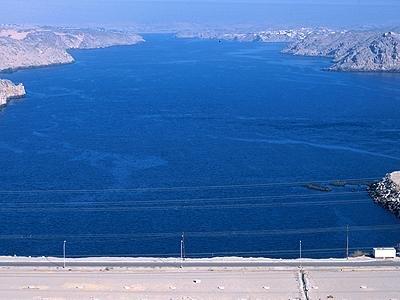In light of the failure of the Renaissance Dam negotiations between Egypt, Sudan, and Ethiopia, and the latter’s insistence on completing the dam and beginning to store water amid stalling negotiations, Egypt has started searching for alternatives to save it from water scarcity.
Egypt announced that it had begun constructing seawater desalination plants, launching projects to recycle sewage water, and rationalise water consumption, in addition to studying the expansion of Lake Nasser, located behind the High Dam. Since 2016, newspapers have revealed that the Armed Forces Engineering Authority is preparing a study on Lake Nasser’s dredging to increase its depth to reduce water losses due to evaporation, as well as make use of accumulated silt. With the Ministry of Irrigation announcing that Egypt had entered a phase of water scarcity, which led to a decline in Egyptian per capita water availability and increased concern about the Renaissance Dam’s impact on Egypt and Sudan (downstream countries), all eyes turned to Lake Nasser.
Questions were raised on the tongues of citizens and observers about the extent to which Lake Nasser could be relied upon to prevent a drought in Egypt and for how long the lake can cover Egypt’s water needs for. It is noteworthy that the Renaissance Dam crisis worsened after General al-Sisi signed an agreement with Ethiopia in 2015 that allowed Addis Ababa to proceed with the dam’s construction and obtain the required funding, as al-Sisi waived this by signing Egypt’s historic rights to the Nile River.
Lake Nasser
The circulating news about the existence of studies to expand or deepen Lake Nasser, followed by experts and specialists’ statements and writings, unanimously agreed that it would be difficult. Some suggested alternative solutions. For his part, Nader Nour al-Deen, a professor of water resources at Cairo University, recently revealed, on his official Facebook page, that he had received a scientific study from the government on the expansion of Lake Nasser to evaluate and correct it.
Nour al-Deen launched an attack on the study, stressing the impossibility of implementing this expansion, as the depths of some areas in the lake reach 140 metres, and excavators cannot reach it. He explained that the lake is a natural creek that no one has created and is submerged in water, wondering if it was possible, then why did we not make the lake only within our lands when the High Dam was established, instead of extending it inside Sudan?
Nader Nour al-Deen has made it clear in previous press statements that the water shortage could be remedied from the lake’s reservoir for three years only by withdrawing quantities ranging between 5 and 10 billion cubic metres annually. He pointed out that it is stipulated that the flood be at least moderate and that the deduction percentage from the share of Egypt and Sudan does not exceed 15 billion cubic metres annually, because this means withdrawing 50 billion cubic metres during the three years. He added that if more than that were withdrawn, the High Dam turbines would be in danger of stopping because the lake’s water level would be less than 148 metres.
The water expert confirmed that Egypt asked during the negotiations to wait until the High Dam lake was filled to 180 metres, to make more water available for withdrawal later, but Ethiopia rejected the Egyptian request.
Sediment and depth
On the other hand, Haitham Mamdouh Awad, an environmental professor at Alexandria University, wrote in an article in a news site that the processes of deepening the lake inside the Egyptian territories will not exceed any amount of storage quantities. He added that the deepening operations would not at the same time reduce the evaporation rates, as the amount of sediment in the lake is about 7 billion cubic metres and no less than 90 per cent of this amount is located inside Sudanese territory.
The depth of the water reaches 70 metres, which makes the cost of dredging one cubic metre up to twice the price of dredging the new Suez Canal, where the maximum depth was within 25 metres. In his article, Awad suggested the dredging project inside the Sudanese lands or the construction of pile dams at the entrances to the lagoons in the lake to reduce the surface of the lake at the lowest possible cost and reduce the evaporation rate.
It is noteworthy that Lake Nasser extends to about 500 kilometres in length, 350 kilometres inside the Egyptian border, and 150 kilomtres inside Sudanese territory. According to the High Dam design, the maximum level of the reserved water in front of it is 183 metres, as the lake’s storage capacity at this level is 169 billion cubic metres.





Recent Comments